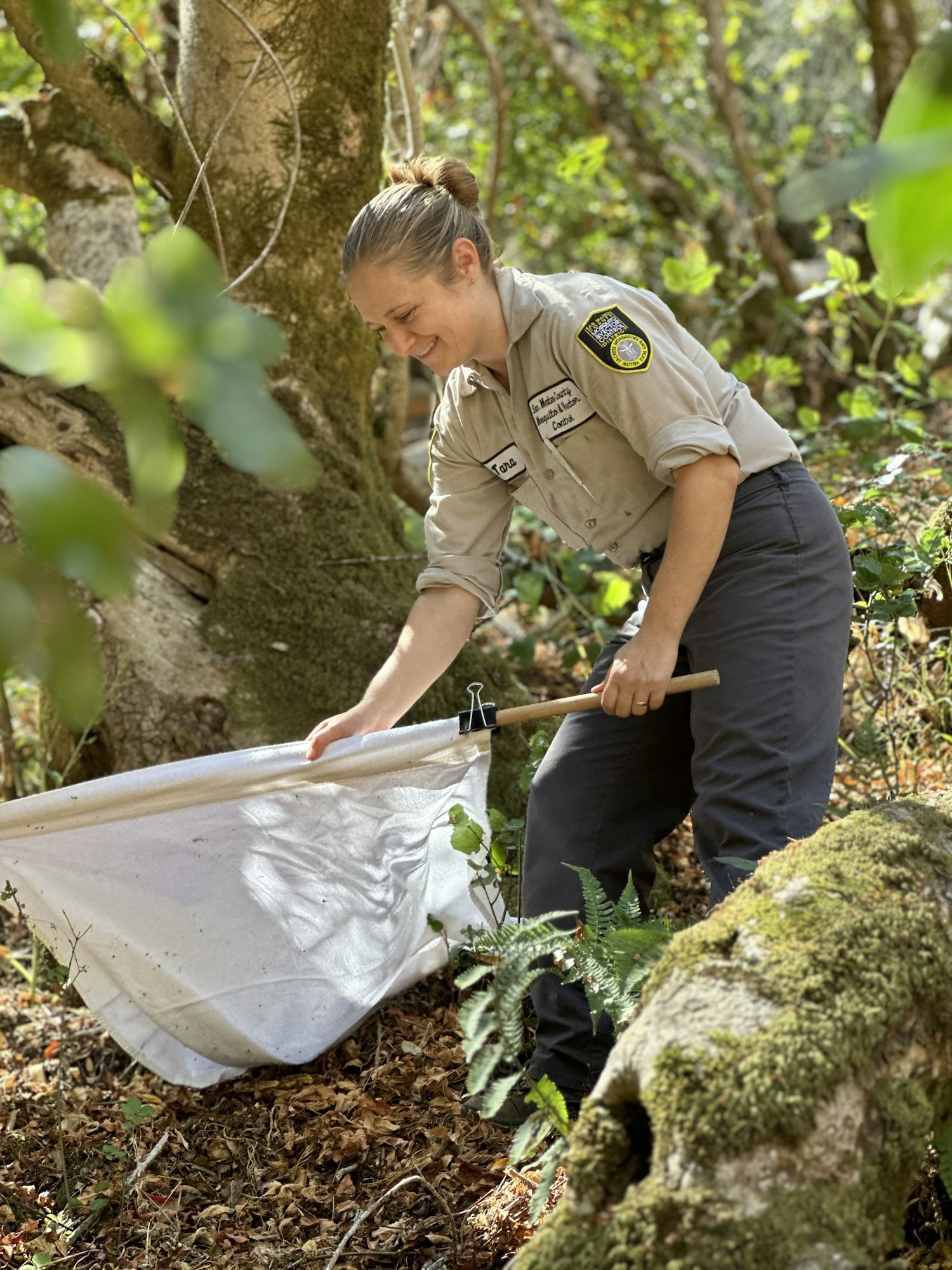Tick Surveillance, Water Year 2023-2024
Tick Collections from parks, 2023-2024 Season (November 2023 through June 2024)

During June, Laboratory staff continued collections for Western black-legged tick (Ixodes pacificus) nymphs. Peak nymphal tick season typically comes to an end in June.
Parks and neighborhoods surveyed in June include areas of the Portola Valley Ranch neighborhood in Portola Valley, Pulgas Ridge Open Space Preserve in San Carlos/Redwood City and Hidden Canyon Park in Belmont.
Additionally, a preschool in Half Moon Bay was surveyed for ticks. No Western black-legged ticks were collected at the school, but a few Dermacentor ticks were found. Dermacentor ticks are not a vector of Lyme disease.
Tick Collections from parks and neighborhoods, 2023-2023 Season (through June 2024)
| Park/Neighborhood | Nearest City/Town | Number of Ix. pacificus adults | Number of Ix. pacificus nymphs |
|---|---|---|---|
| Garrett Park | Redwood City | 3 | |
| Sign Hill Park | South San Francisco | 0 | |
| Twin Pines Park | Belmont | 0 | |
| Hillside Park | Daly City | 0 | |
| Hillsborough south | Hillsborough | 114 | |
| Mussel Rock | Daly City | 1 | |
| Windy Hill Open Space Preserve | Portola Valley | 443 | 101 |
| Burleigh H. Murray Ranch | Half Moon Bay | 126 | |
| Phleger Estate | Woodside | 84 | |
| San Pedro Valley Park | Pacifica | 100 | 30 |
| Hidden Canyon | Belmont | 55 | 74 |
| Wunderlich Park | Woodside | 70 | |
| Edgewood Park | Redwood City | 187 | |
| Huddart Park | Woodside | 74 | |
| Thornewood Open Space Preserve | Woodside | 144 | |
| Coal Mine Ridge | Portola Valley | 78 | |
| Los Trancos Open Space Preserve | Portola Valley | 94 | |
| Coal Creek Open Space Preserve | Portola Valley | 64 | |
| Big Canyon Park | San Carlos | 67 | |
| Skyline Ridge Open Space Preserve | La Honda | 68 | |
| Portola Valley Ranch | Portola Valley | 62 | |
| Pulgas Ridge Open Space Preserve | Redwood City | 71 |
Page last reviewed July 3, 2024
